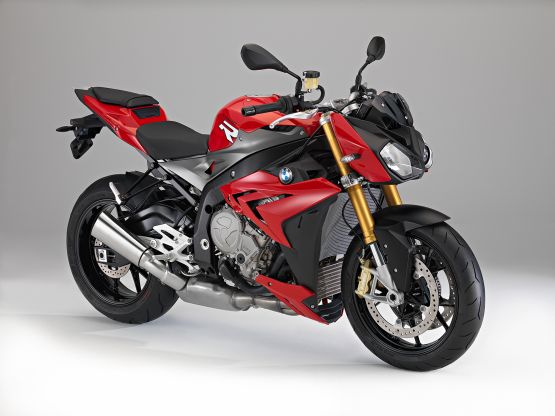The basics are identical in all markets. The engine is heavily based on the S1000RR’s DOHC, 16-valve engine, and is de-tuned with a reworked cylinder head, softer cams, reduced compression ratio (12:1 from 13:1), revised injection system and new four-into-one exhaust. The rev limit is reduced by 2,000 revolutions per minute to 12,000 RPM, and the peak power output is 160 PS, 30 PS down on the RR’s 193 PS. But the peak torque figure of 112 Nm is unchanged, and the new engine makes more torque everywhere below 9,000 RPM.
So it’s very powerful by super-naked standards and it’s also very sophisticated. The standard model’s engine modes are Road and Rain, selectable via a button on the right bar, with the latter giving softer delivery to a lower 138 PS maximum, and differing level of ASC. The Sport’s extra modes, Dynamic and Dynamic Pro, are for sporty riding. They’re also linked to the Dynamic Traction Control.
In similar fashion the twin-spar aluminium frame is based on the RR’s, but modified with more relaxed steering geometry (rake 0.7 mm less steep at 24.6 degrees, trail 2.6 mm longer at 98.5 mm) and a seven-mm longer wheelbase to give extra stability with the more upright riding position and those wide bars out in the breeze. The standard S1000R gets 46-mm Sachs upside-down (USD) forks and works the twin-sided aluminium swing-arm via a conventional monoshock. The optional DDC semi-active suspension is closely based on the HP4’s. It changes with riding mode, and automatically adapts its damping levels to suit the current riding situation.



Leave a Reply